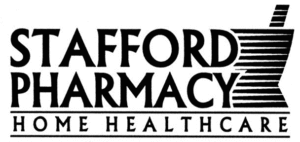On average, children get 7 to 10 colds per year or more if they attend day care. Each cold can last one to two weeks; this means that children can be sick for 1/3 of every year, and this is considered normal!
However, the use of medicine to suppress a cough or treat cold symptoms in this age group is not recommended. Cough suppressants can prevent children from removing phlegm, possibly making them worse instead of better. Although it may not be enjoyable, the purpose of a cough is to remove excess mucus from their lungs. Often, the best treatments for a cold for children are grandma’s home remedies—chicken noodle soup and extra sleep. Grandma had the right idea, because no matter the child or the symptoms, hydration is always important. Plenty of fluids – water, juice – and because their bodies are fighting a viral infection, let them sleep and encourage them to rest to allow their immune systems to do what it does best – fight infection.
When your child has a fever, it is often a sign that he or she is fighting an infection. Treatment of a fever is often not necessary because it helps your child fight the infection, but treatment may help your child feel better. The temperature that defines a fever is different depending on where it is measured.
| Thermometer Placement | Fever Point |
| Rectum | +38.1°C |
| Oral | +37.6°C |
| Armpit | +37.4°C |
| Ear/Forehead | +38.1°C |
Tylenol®, Tempra® (acetaminophen) and Advil®, Motrin® (ibuprofen) are both safe to use for pain and fever in most children. These medications should be dosed based on your child’s weight. Aspirin® (acetylsalicylic acid) cannot be used in children under the age of 18 because of the risk of Reye’s syndrome (sudden brain and liver damage). Ask us for a handout with the recommended pain/fever reliever dosing, for both acetaminophen and ibuprofen.
When you are in the pharmacy also ask about picking up an easy to use digital thermometer. Don’t guess at your child’s temperature or whether or not they have a fever, know for certain with an easy to use digital thermometer.
No more struggles with the old capillary style thermometers. The new digital thermometers give you a digital readout in your choice of a Fahrenheit or Celsius temperature. Not only is it easy to read but the measurement process is fast – a matter of 30 seconds or less, (depending on brand), and most styles can be used for oral and under the arm measurement, especially useful with very young children who you think just may not be ready for an oral measurement. Need a rectal measurement, no problem. Just ask the pharmacist to help you select a type that can be used rectally. All are battery operated with the life span of most being one to two years, so you know you’ll have a thermometer ready for use whenever it becomes necessary.
Lastly, although we are flooded with advertisements promoting ‘multi-symptom’ relief for the treatment of adult cold and flu, our children deserve special consideration. Simple, symptom specific medication is the rule. Treat those symptoms that require treatment. Better yet, discuss any medication selection with the pharmacist who is always available for a quick consultation, at Stafford Pharmacy & Home Healthcare.
* Speak to a pharmacist to help choose the right product for your child? *


